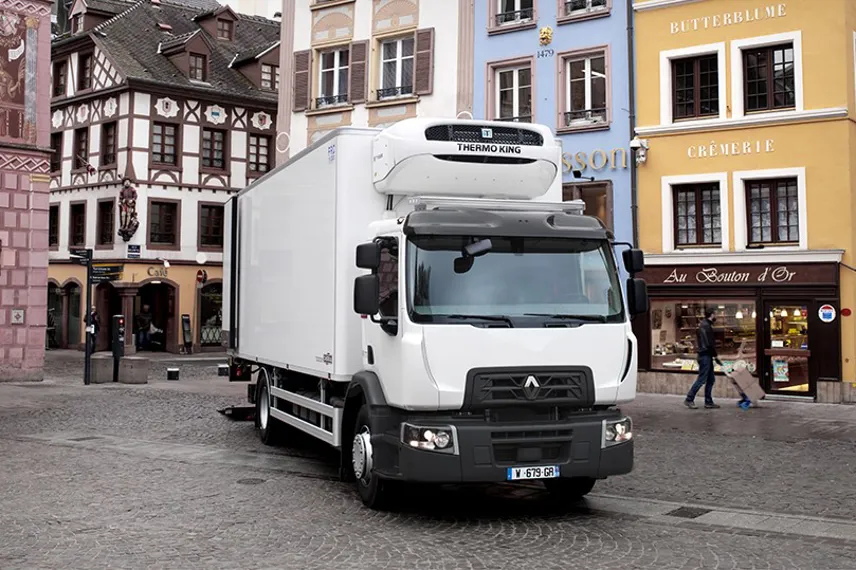Review
Transport efficiency is a key requirement when operating a commercial vehicle and, at the lower end of the weight range, operators have traditionally gravitated towards the 7.5-tonne gross vehicle weight (gvw) sector.
But, with the inevitable reduction in the pool of truck drivers using their grandfather rights at 7.5 tonnes, the ability for new drivers passing their rigid truck licences allows operators to give consideration to moving further up the gvw scale.
In many cases, manufacturers share the same chassis and cab design up to and including around the 12-tonne weight. Above this the vehicle resembles more of the heavier weight rigids mainly based around 18 tonnes.
So a move towards a 12-tonne truck has many benefits as a similar chassis weight, but increased gvw means an almost doubling of payload potential without an increase in footprint and current driver licencing requirements.
Power for the Renault D210 is provided by the in-house DTI5 engine rated at 210PS (154kW) developed at 2,200rpm and a torque of 800Nm provided along a rev range between 1,050rpm to 1,700rpm.
This common rail 5.1-litre engine has a working fuel injection pressure of 2,000 bar and uses variable geometry turbocharging along with SCR and a DPF to meet the stringent Euro VI levels with a reduction in engine torque of 25% when vehicle emissions are above the ‘D’ level requirements.
The lightweight aluminium cased automated six-speed Optitronic gearbox features a 0.78 overdrive on sixth gear. There is also the option of an Allison automatic with torque converter as well as a manual ZF 6S 800 six-speed.
An exhaust-mounted 80kW retarder is standard, delivering maximum braking at 2,800rpm, with an electronic Telma retarder option.
The D range at 12 tonnes has 12 chassis lengths ranging from the tipper-based 3,250mm right through to the distribution-friendly 6,500mm. These allow body lengths ranging from 4,216mm to 9,486mm, with the 4.4m wheelbase one of the most popular, allowing for a six-metre (20ft) body.
The front axle features parabolic leaf springs with stabiliser bars and is rated 4,480kgs. The rear suspension features parabolic springs and stabiliser bars, air suspension available as an option. The P08120 single reduction rear axle has a drive axle ratio of 3.31 and differential lock is an option.
Looking at the 4.4m wheelbase, the kerb weight is 4,261kgs, offering a payload of 7,739kgs which in many cases is almost twice the payload of a 7.5-tonner with, basically, the same chassis.
Discs all round are standard and the D range features the usual array of electronic braking systems such as electronic brake assist (EBA), emergency brake light (EBL) and anti-wheel lock braking system (ABS).
The 2.3m all-steel day cab features rubber pads on the front with springs at the rear and the mirrors are not only electrically controlled but also heated. Inside, the driver’s seat is air suspended and has an armrest complete with integral seat belt. The dashboard is split into three: the
instrument panel, centre console and passenger area. The instrument panel is a mixture of analogue and digital with a prominent rev counter featuring a colour coded green zone.
The Renault D120 is an efficient carrying machine balanced with the low cost of ownership associated with a 7.5-tonner.
















